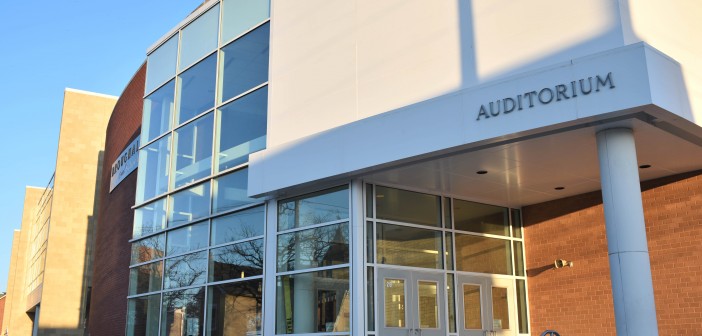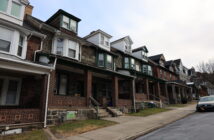The Bethlehem Area School District is one of the largest in the state with roughly 13,400 students attending its 16 elementary schools, four middle schools and two high schools.
Despite the fact that nearly 54 percent of students district wide are eligible for free or reduced lunch—an indication of being at or below the federal poverty line—the district receives only 27 percent of its revenue from the state—a number that is unrepresentative of the district’s need, according to superintendent Joseph Roy.
School districts receiving similar levels of state aid have rates of economically disadvantaged students in the 19 to 36 percent range, he said.
Inequitable state funding is an issue that has continuously affected school districts in Pennsylvania since former Governor Tom Corbett’s 2011-12 budget cut nearly $860 million from classroom funding statewide.
$570 million of these cuts still remain today, a policy brief from The Pennsylvania Budget and Policy Center reported.
However, a decrease in state education funding is not the only problem affecting Pennsylvania’s schools. The allocation of funds presents another challenge.
“Pennsylvania is the worst state in the country in terms of funding inequality between it’s wealthiest and poorest school districts, with the spending gap per student between these two groups being more than double the national average,” the policy brief reported.
This gap, Roy explained, is due to the absence of a state funding formula that effectively distributes funds to ensure that districts receive aid in alignment with their needs.
For the Bethlehem Area School District, state aid is relatively low because although over half of the students live in families with incomes below the poverty line, the district as a whole is not categorized as poor, according to the current factors considered in determining state funding. If there were a funding formula that took into consideration factors such as poverty rates, the district would receive much more money from the state, Roy said.
Because the district includes suburban as well as urban neighborhoods, there is a wide range in economic status of its residents. Unlike neighboring school district Allentown—which receives almost 80 percent of its funding from the state—Bethlehem relies heavily on local property taxes. Because the wealthier suburban areas have a significant property tax base, the district as a whole is seen by the state as able to fund its programs without additional state aid, said Michael Faccinetto, president of the Bethlehem Area School District’s board of school directors.
“But this is not an accurate representation,” Faccinetto said. “We are not technically a ‘poor’ district, but many of our schools are.”
Donegan Elementary School, located in the Southside of Bethlehem, for example, hit a 97.7 percent poverty rate this year.
“In such a large district like this, you have such extremes,” said Sonia Vazquez, principal of Donegan elementary. “There are those who have it all, and those who have absolutely nothing.”
At Donegan, the majority of families have nothing.
“I see families of four with parents who only make $13,000 a year,” Vazquez said.
She explained that since the need at Donegan is so concentrated, it becomes impossible to support every family and help every child achieve the academic standards set by the state.
In wealthier schools in the district, parents can supply their children with resources such as books and after-school enrichment to help them succeed. Low-income families cannot afford to do this and, accordingly, these children often perform at a lower level.
“It’s not that our children can’t learn, it’s not that our children are stupid, and it’s not that families don’t care about them succeeding,” Vazquez said. “It’s that they don’t have the opportunities to be able to do that because of the lack of money.”
Something as simple as a trip to the zoo, Vazquez said, makes a difference. Children in poverty aren’t exposed to these types of experiences unless the school brings them and without this, she said children won’t learn about the world around them.
According to Detrick McGriff, principal of Broughal Middle School, children in poverty can be thought of as “school dependent,” meaning the support they get at home may not be enough.
“With poverty, it’s important to think about helping the child as a whole,” Vazquez said. “We bear a lot of that responsibility.”
Both Donegan and Broughal have established programs such as clothing and food drives to help struggling families get the means they need to survive.
But, without funding from the state, these programs are difficult to sustain. School administrators across the district have had to get creative in order to continue to bring much-needed resources to their students.
“I’ve been at this district for 34 years now and have never had to engage in looking for money like I have in recent years,” Vazquez said. “There used to be a time when there was so much money from the state that at the end of the year, I would go out and buy extra school supplies.”
Today, Vazquez said, she has to seek many of the things her students need from the community.
Organizations, businesses, universities and community groups have provided services and resources to Bethlehem’s poorer schools in recent years.
For example, if a child needs glasses, something that greatly impacts their ability to learn, Vazquez said she calls St. Luke’s hospital and asks them bring a van with supplies.
“We’ve been lucky that our community has helped augment the lack of funding from the state,” McGriff said.
But community help and support can’t satisfy every shortfall.
Since the 2011-12 budget cut, the Bethlehem Area School District has had to cut nearly $20 million from its budget, Roy said.
Having a tighter budget has caused administrators in Bethlehem to make difficult decisions.
“Being able to function where you are constantly running on a very thin budget teaches you to be cost effective,” McGriff said.
When deciding what to cut, Roy said he thinks in terms of concentric circles, with the classroom being at the center and external support systems—like after-school tutoring—at the exterior. The district has avoided major classroom impacts by making cuts in this way.
Since 2011, all family development specialists have been fired, 2/3 of pre-school classrooms have been eliminated, and teaching staff is spread thin district-wide.
For schools like Donegan, where the need is high, the loss of these support systems hits hard.
But, according to Roy, the district is not yet in “crisis mode” and can continue to sustain itself at the current levels without additional state funding in the short term.
But this is not where Roy wants the district to be.
The district’s buses, for example, are mechanically safe but old enough so that the yellow paint is faded. Roy said that the yellow must meet certain brightness requirements in order to pass state inspection and the state police have warned that many of the buses might not pass.
He said many of the district’s facilities also need repair.
If steps aren’t taken towards improvement on these projects soon, Roy said there will be a larger problem later on.
When Governor Tom Wolf was elected in 2015, one of his top priorities was to address the debate over education funding. He proposed a budget that would put back $400 million in education, which for Bethlehem would mean an additional $5 million.
Wolf came up with a bi-partisan plan for the 2015-16 school year that was due to be passed on June 30, but it still has not been approved.
“Come January, we start to budget for the 2016-17 school year, but we don’t even know what’s happening for 2015-16, which is scary,” Faccinetto said.
Based on Wolf’s promises, school administrators are confident that they will be receiving more state aid in the near future.
According to Vazquez, Wolf has visited Donegan and seen for himself the hardship that students face due to the current funding problems.
“If he doesn’t keep his promise and the budget that gets approved isn’t different, he’s going to hear about it,” Vazquez said.






Comment policy
Comments posted to The Brown and White website are reviewed by a moderator before being approved. Incendiary speech or harassing language, including comments targeted at individuals, may be deemed unacceptable and not published. Spam and other soliciting will also be declined.
The Brown and White also reserves the right to not publish entirely anonymous comments.
1 Comment
Pingback: Latest Face Painting Supplies For Children News - howdoyoupaint.com